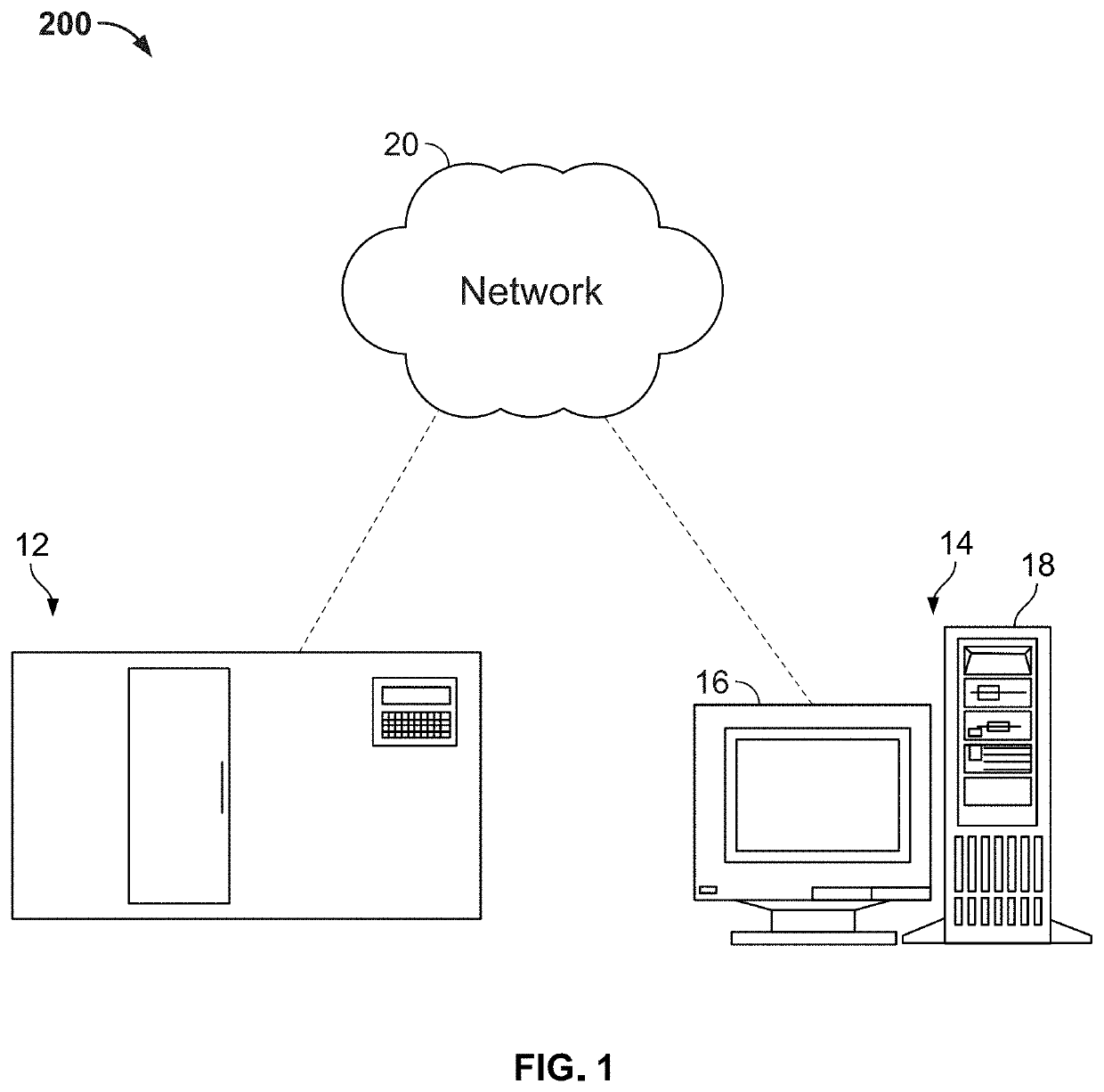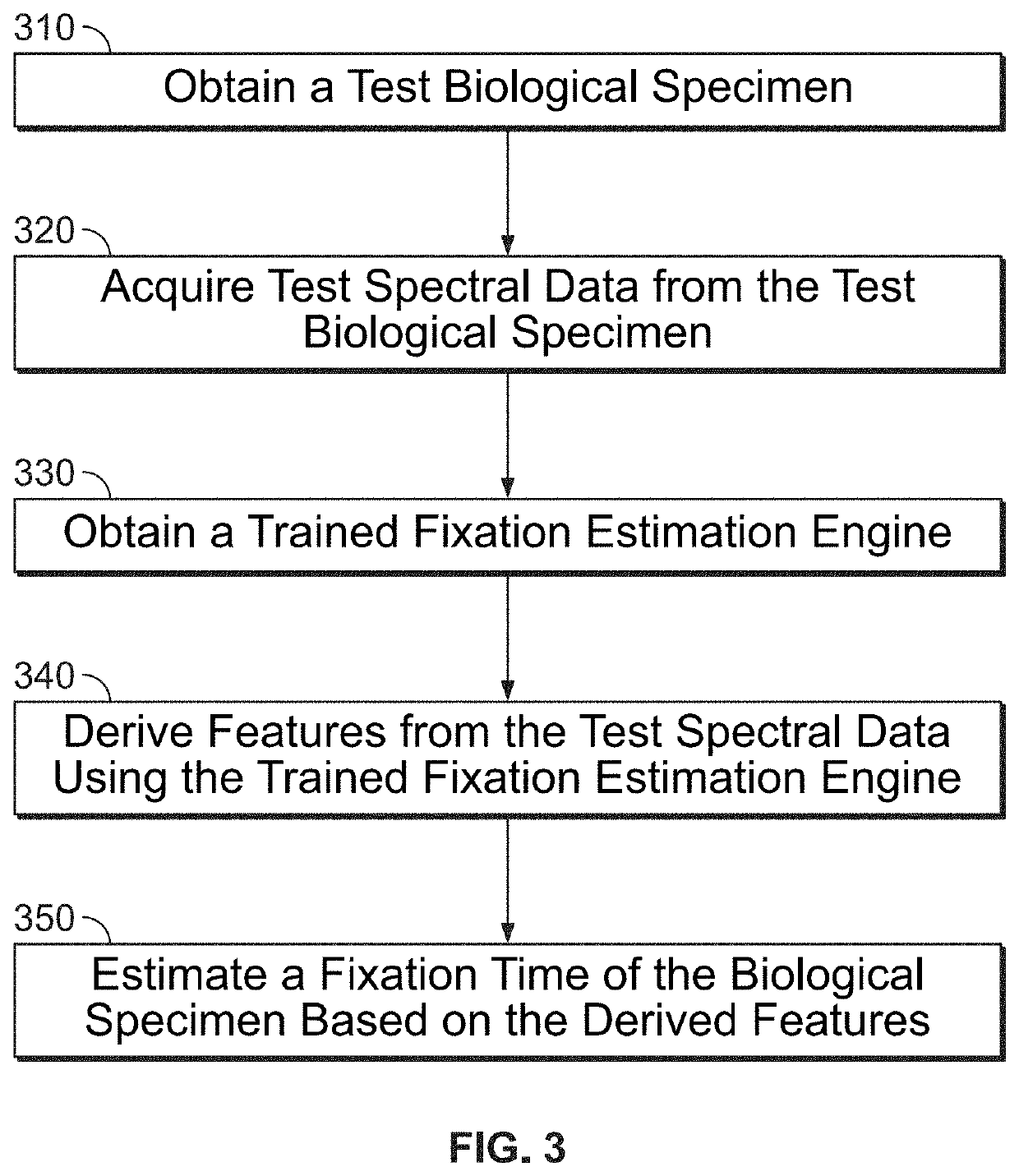Systems and methods for assessing specimen fixation duration and quality using vibrational spectroscopy
a vibration spectroscopy and specimen technology, applied in the field of systems and methods for assessing specimen fixation duration and quality using vibration spectroscopy, can solve problems such as inconclusive results and/or misdiagnosis
- Summary
- Abstract
- Description
- Claims
- Application Information
AI Technical Summary
Benefits of technology
Problems solved by technology
Method used
Image
Examples
example 1
g Fixation Duration Using a Trained Fixation Estimation Engine
[0153]The Example provided below is illustrative of the methods described herein.
[0154]Introduction
[0155]Modern histology is built on the 100+year old cornerstone technology of formaldehyde fixation which preserves tissue's biostructure by arresting mechanisms of molecular degradation by crosslinking a tissue's biostructure. How thoroughly a sample is fixed can significantly impact detected protein expression and in extreme cases a patient's diagnosis. For example, ASCO / CAP guidelines require samples be fixed for 6-72 hours. Currently tissue fixation in clinical practice is laboratory specific and highly variable. Despite its importance, there are however no analytical methods of measuring fixation quality.
[0156]Mid infrared spectroscopy (mid-IR) is a powerful optical technique that probes the vibrational state of individual molecules in the tissue and is very sensitive to the conformational state of proteins. This extrem...
example 2
a Fixation Estimation Engine
[0186]In one embodiment, a projection-onto-latent-structure (also partial least squares regression) PLSR model is trained using spectra acquired from a mid-IR microscope. The mid-IR spectra is collected at roughly one hundred locations throughout the tissue, so the average spectrum is representative of the average of the tissue. All spectra were atmospherically corrected to remove CO2 contamination, baseline-corrected using concave rubber band correction with 10 iterations and 64 baseline points, then spectra were amplitude normalized. Finally, all the spectra from each tissue were averaged together. Next a PLSR regression model was trained by splitting the data into 5 parts, meaning every 5th spectrum was pulled out of the data set and only used exclusively for validation of the model. About 80% of the tissue's spectra was then used to train a PLSR model using 2-fold cross validation and the raw absorption spectra (as opposed to the 1st, 2nd, etc. deriva...
PUM
 Login to View More
Login to View More Abstract
Description
Claims
Application Information
 Login to View More
Login to View More - R&D
- Intellectual Property
- Life Sciences
- Materials
- Tech Scout
- Unparalleled Data Quality
- Higher Quality Content
- 60% Fewer Hallucinations
Browse by: Latest US Patents, China's latest patents, Technical Efficacy Thesaurus, Application Domain, Technology Topic, Popular Technical Reports.
© 2025 PatSnap. All rights reserved.Legal|Privacy policy|Modern Slavery Act Transparency Statement|Sitemap|About US| Contact US: help@patsnap.com



